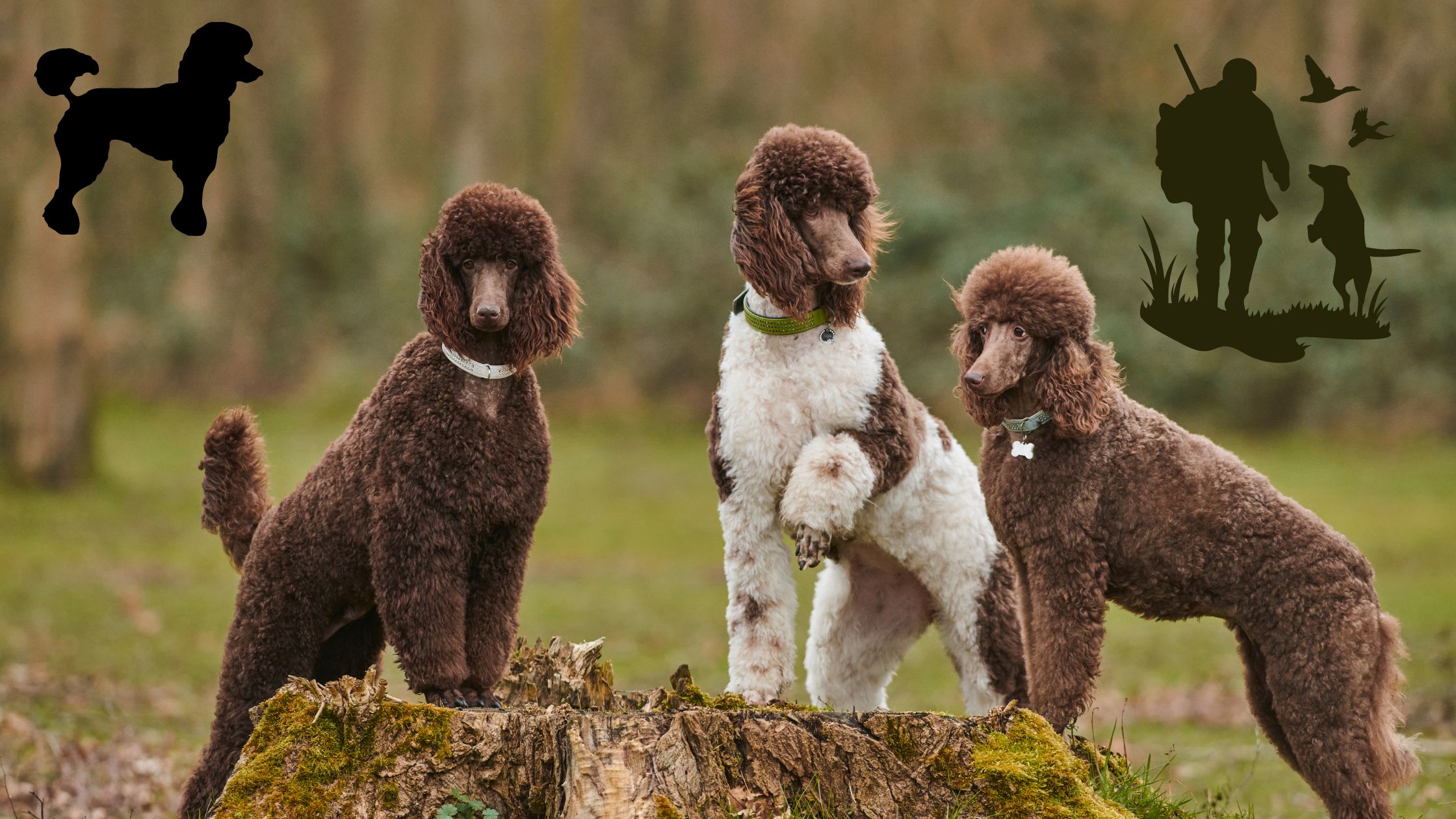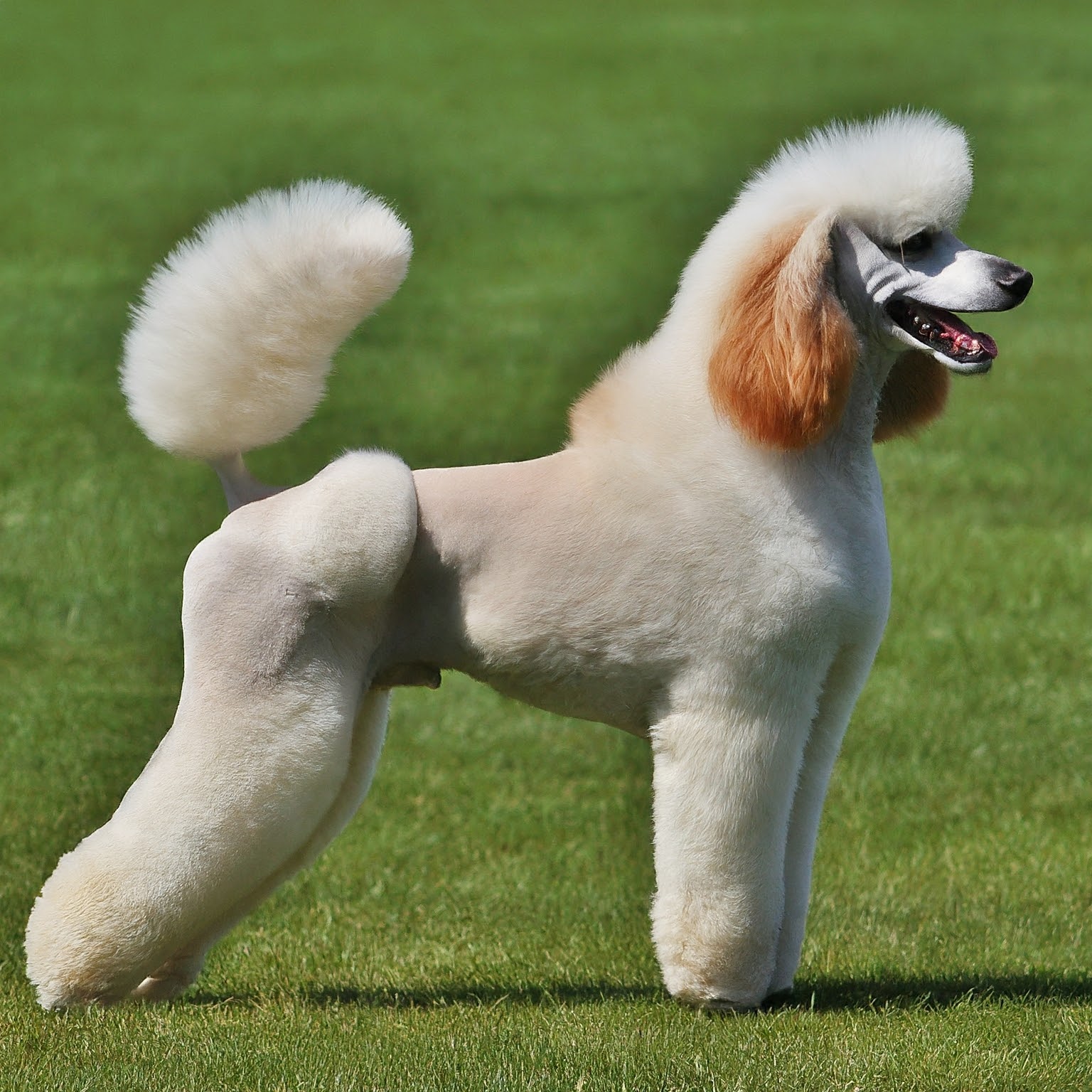Standard poodles are renowned for their intelligence, elegance, and unique appearance, but have you ever wondered, “When do Standard Poodles stop growing?” Understanding their growth patterns is crucial for providing optimal care and ensuring they reach their full potential. This comprehensive guide will captivate your interest and equip you with the knowledge needed to navigate the various growth stages of your Standard Poodle, recognize the factors influencing their development, and address common growth concerns. Whether you’re a new poodle parent or an experienced owner, this guide offers valuable insights to help your poodle thrive at every stage of their life.
Understanding When Do Standard Poodles Stop Growing?

Standard poodles undergo several growth stages, each marked by unique physical and behavioral changes. These stages include puppyhood, adolescence, young adulthood, and full maturity.
Puppyhood (0-6 Months)
During the first six months, standard poodle puppies experience rapid growth in both height and weight. This period is crucial for their development; proper care sets the foundation for their future health.
Physical Development
- 0-4 Weeks: Puppies mainly depend on their mother’s milk. Their eyes and ears open, and they begin to explore their surroundings.
- 4-8 Weeks: Transition to solid food begins—rapid growth in size and weight.
- 8-16 Weeks: Increased mobility and coordination. Growth in height and weight continues.
| Age (weeks) | Height (inches) | Weight (pounds) |
|---|---|---|
| 4 | 8-10 | 4-5 |
| 8 | 12-13 | 7-10 |
| 12 | 14-16 | 10-22 |
| 16 | 18-19 | 10-22 |
Behavioral Changes
- 0-4 Weeks: Limited interaction with the environment.
- 4-8 Weeks: Begin socializing with littermates and humans.
- 8-16 Weeks: Increased curiosity and playfulness.
Nutritional Requirements
- 0-4 Weeks: Mother’s milk.
- 4-8 Weeks: Gradual introduction of puppy food.
- 8-16 Weeks: High-quality puppy food rich in protein, vitamins, and minerals.
Adolescence (6-12 Months)
From six to twelve months, standard poodles continue to grow, although slower than puppyhood. This stage is marked by the maturation of their skeletal structure and the development of adult teeth.
Continued Physical Development
- 6-9 Months: Growth rate slows down. Continued muscle development.
- 9-12 Months: Nearing full height, continued filling out in body mass.
| Age (months) | Height (inches) | Weight (pounds) |
|---|---|---|
| 6 | 21-23 | 23-30 |
| 9 | 21-25 | 30-45 |
| 12 | 21-27 | 35-55 |
Behavioral Adjustments
- 6-9 Months: Increased independence and potential for behavioral challenges.
- 9-12 Months: Further socialization and training are needed to address behavioral issues.
Training and Socialization
- Focus on reinforcing good behavior and addressing any behavioral issues during this period.
- Consistent training and positive reinforcement are crucial.
Young Adulthood (1-2 Years)
Between one to two years, standard poodles reach young adulthood. Most poodles achieve their full height during this period, although they may continue to fill out in terms of muscle and body mass.
Physical Maturity
- 12-18 Months: Final growth spurts in height.
- 18-24 Months: Continued muscle and body mass development.
| Age (years) | Height (inches) | Weight (pounds) |
|---|---|---|
| 1 | 21-27 | 35-55 |
| 2 | 24-27 | 45-70 |
Mental and Emotional Growth
- 1-2 Years: Standard poodles become more settled in their temperament. Continued mental stimulation is essential for their development.
Adulthood (2+ Years)
Beyond two years, standard poodles are considered fully mature. While their physical growth may slow, maintaining their health through balanced nutrition, regular exercise, and preventive veterinary care remains essential.
Full Development Milestones
- Achieve full height and weight.
- Settled temperament and established behaviors.
Factors Influencing Growth

Several factors influence the growth and development of standard poodles, including genetics, nutrition, exercise, and healthcare practices.
Genetics
Genetics plays a significant role in determining a standard poodle’s size and overall development. Breeding practices and lineage can influence height, coat quality, and susceptibility to specific health conditions.
Nutrition
A balanced diet is crucial throughout a standard poodle’s life stages, particularly during growth. High-quality dog food that meets their nutritional needs, including protein, vitamins, and minerals, supports healthy bone and muscle development.
Exercise and Activity Levels
Regular exercise promotes muscle tone, joint health, and cardiovascular fitness in standard poodles. Tailoring exercise routines to their age and energy levels helps prevent obesity and supports overall physical well-being.
Health and Veterinary Care
Routine veterinary visits are essential for monitoring a standard poodle’s growth and detecting any health issues early on. Vaccinations, parasite control, dental care, and regular check-ups contribute to their long-term health and vitality.
Common Growth Concerns and How to Address Them

Understanding common growth-related issues allows owners to address and prevent them proactively.
Growth Plate Injuries
Like other large breeds, standard poodles are susceptible to growth plate injuries during their rapid growth phases. Proper nutrition, controlled exercise, and avoiding strenuous activities can reduce the risk of these injuries.
Underweight or Overweight Issues
Maintaining an ideal body condition score is essential for a standard poodle’s health. Proper feeding practices, portion control, and regular weight monitoring help prevent underweight or overweight issues.
Behavioral Changes
Behavioral changes, such as increased energy levels or shifts in temperament, can accompany growth spurts in standard poodles. Mental stimulation, consistent training, and positive reinforcement can help manage these changes effectively.
Health Conditions
Certain health conditions, including hip dysplasia and bloat, are prevalent in standard poodles. Awareness of breed-specific health risks and proactive veterinary care are crucial for early diagnosis and treatment.
Tips for Supporting Your Standard Poodle’s Healthy Growth

Implementing these tips ensures that standard poodles grow healthy and happy, reaching their full potential.
Balanced Diet and Nutrition
Provide a balanced diet tailored to your standard poodle’s age, size, and activity level. Consult your veterinarian to choose the best food and feeding schedule for optimal growth and development.
Exercise Recommendations
Engage your standard poodle in regular, age-appropriate exercise to promote physical fitness and mental stimulation. Walking, running, and interactive play sessions strengthen muscles and enhance well-being.
Regular Veterinary Visits
Schedule regular veterinary check-ups to monitor your standard poodle’s growth, health, and vaccinations. Early detection of health issues allows for timely intervention and effective management.
Training and Socialization
Consistent training and positive reinforcement help standard poodles develop good behavior and social skills. Start training early and expose them to environments, people, and other pets to promote well-rounded adult behavior.
Conclusion
Understanding the growth stages and factors influencing standard poodles’ development empowers owners to provide attentive care throughout their lives. Owners can ensure their standard poodles thrive physically, mentally, and emotionally by prioritizing nutrition, exercise, veterinary care, and behavioral training.
Summary of Key Points
- Standard poodles undergo distinct growth stages from puppyhood to adulthood.
- Genetics, nutrition, exercise, and veterinary care influence their growth and development.
- Common growth concerns include injuries, weight management, behavioral changes, and health conditions.
- Tips for supporting healthy growth include balanced nutrition, regular exercise, veterinary visits, and practical training.
Learn more on Poodle forum
Know about ! Are Poodles Hunting Dogs? Unveiling Their True Instincts
Encouragement for Owners
With proper care and attention, standard poodle owners can enjoy a rewarding journey of watching their pets grow into healthy and happy companions.
FAQ: Standard Poodle Growth and Lifespan
What age are Standard Poodles fully grown?
Standard Poodles typically reach their full height and weight between 18 to 24 months. During this time, they undergo significant physical development, including height gain in the first year and weight gain as they fill out.
At what age do Standard Poodles calm down?
Standard Poodles often begin to calm down around 2 to 3 years old. As they mature, their energy levels tend to stabilize and become more settled, although they will still enjoy regular exercise and mental stimulation.
At what age are Toy Poodles fully grown?
Toy Poodles usually reach their full size between 6 to 7 months. While their height stabilizes early, they may continue to gain weight and fill out slightly for a few more months.
Can Poodles live up to 20 years?
While it’s not common, some Poodles can live up to 20 years with proper care, a balanced diet, regular exercise, and regular veterinary check-ups. Their lifespan depends on genetics, health, and overall care.
What is the average lifespan of a Standard Poodle?
The average lifespan of a Standard Poodle is around 12 to 15 years. With proper care, some may live longer, enjoying a healthy and active life well into their senior years.
Do Standard Poodles bark a lot?
Standard Poodles can be vocal and may bark to alert their owners or when they are excited. However, excessive barking can be managed and minimized with proper training and socialization.
